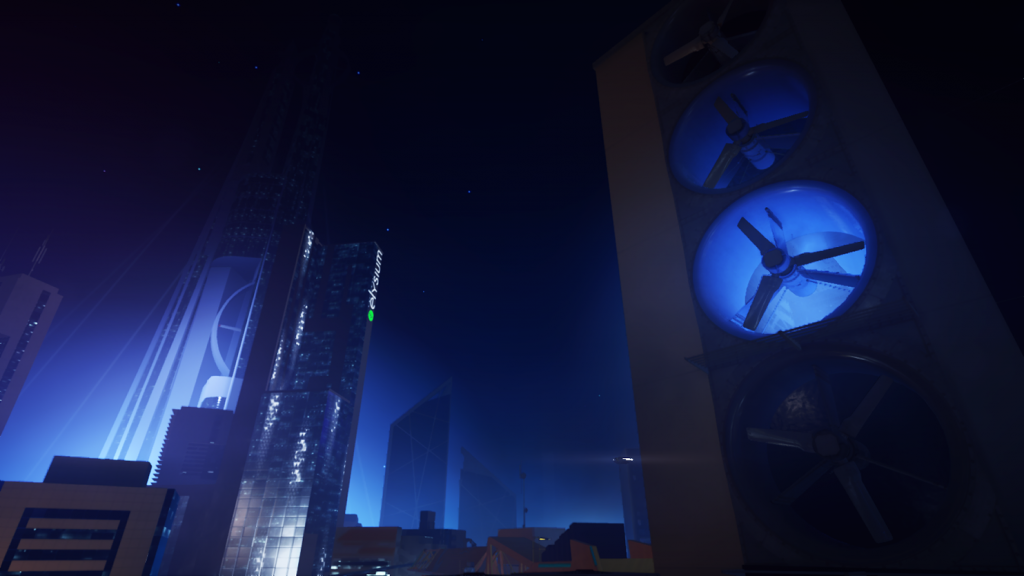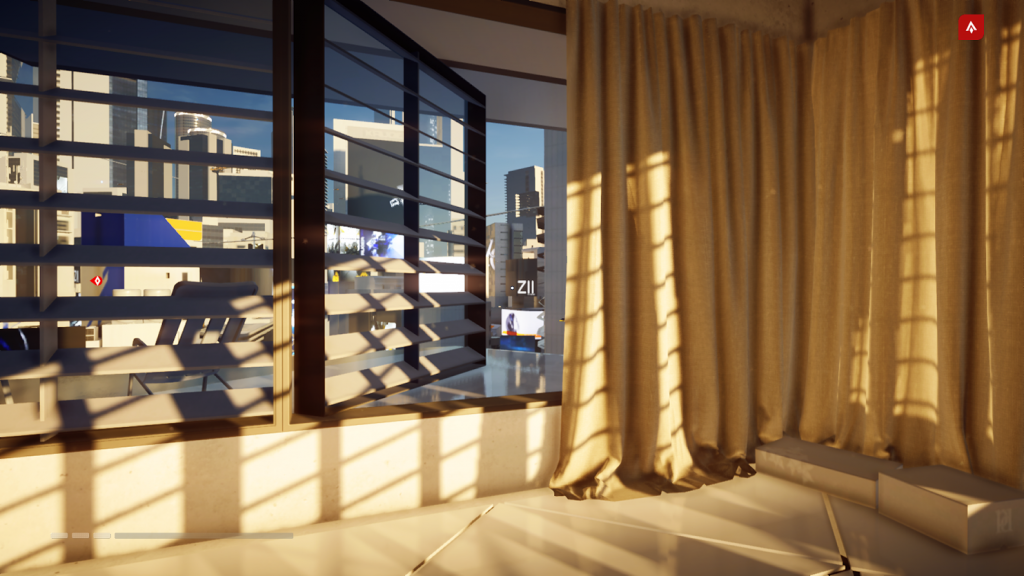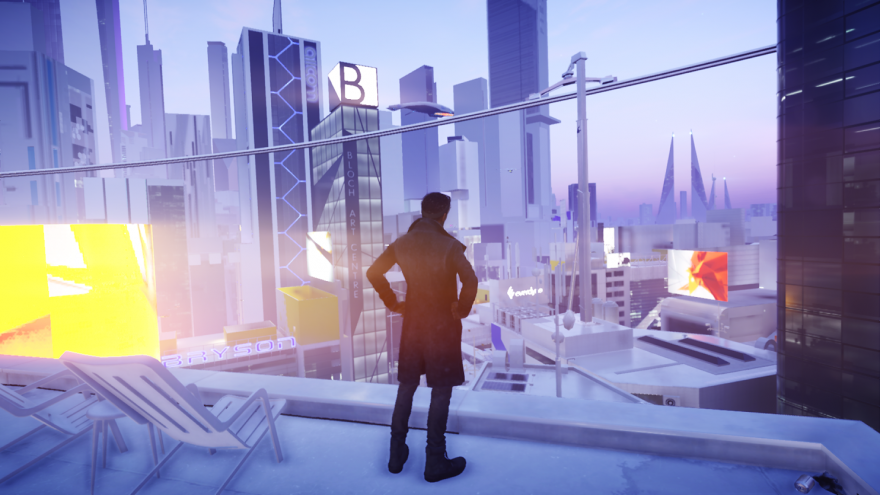I’ve always been fascinated by the coherence and incoherence of cities. The system and interface of their streets. The network logic of their rooms. In my fifth year in London, buried in basements fashioned to appear as French cafés or Italian bistros, I obsessively traced the shapes of silver ducts and pipes, interwoven along the ceilings as if they were circuit boards. Among the fake leather seating and off-white walls, the large canvas prints of Parisian street scenes and the art-deco light fixtures they stood out as uniquely functional objects, unornamented, hidden in plain sight. I followed them down flights of stairs, into low corridors, slanted and uneven, where rows of doors were marked with pristine private signs, leading to unknown destinations at unknown angles along unknown vectors. I began to see the city differently, not as a territory of demarcations, but as a single branching corridor of various volumes, a set of rooms that might be traveled in a single path, one to the other, never stopping, like the current in the wire—the signal in the system.
The city of Mirror’s Edge: Catalyst is nothing like London. Instead of crumbling brick and rain-stained concrete there are only glistening volumes and flaring screens. There is no dirt, no decay, only pristine progress occasionally sullied by the scuff marks of black-soled running shoes. This virtual city lacks the complexity of the glacially growing oil slick that is London. As it stretches towards the horizon it reaches towards simplicity, devolving into white cubes as if reaching back into its own history of white-boxed levels and untextured 3D spaces. It is almost nonsensical, built from collections of interiors and exteriors that don’t seem to point towards any kind of civic function. It has no history—it could have been built in a day. It has no citizens, and no life, apart from the idling shapes of ever distant figures and the constant drone of unmanned vehicles. Yet I can’t help but feel the two cities are somehow connected, as if one was the dream of the other. Not a dream of minds but of machines.
///
The original Mirror’s Edge (2008) had a kind of purity to its narrative. A nameless city, simple characters, an obvious conspiracy, it allowed the art direction and movement systems of the game to step into the frame. Speak to a Mirror’s Edge fan and they’ll barely remember the ins-and-outs of the plot, the clean lines and smooth movements wiping them from their memory. Developer DICE’s response to their apparent failure is to flood Mirror’s Edge: Catalyst with unavoidable narrative, with “lore” and exposition. It has been suggested that Catalyst is a remake of Mirror’s Edge, or a reboot, but it is in reality a re-alignment of the first game with the recognizable features of a mainstream videogame, a reparation between the most original of its ideas and the most generic features of its medium.

Most of this is done inelegantly: The nameless city is relabeled as “Glass” (as in “city of Glass,” sadly not a Paul Auster reference). This city is populated with seemingly endless terminology; “Grid,” “Beat,” “Omnistat,” “Employ,” “Scrip,” which is further muddied by being fed into awkward camel-case terms like “offGrids,” “outCaste,” “gridLink.” And finally a thin sheen of cyberpunk plot is laid over the whole thing, built around a skeleton of subterranean rebels and an ignorant, hooked-up populace pulled from the body of The Matrix (1999) and clad in ideas so broad that they fail to register as anything other than well-worn tropes. With the inelegance of a cyberpunk-themed Tumblr, it all feels clumsy, especially when the big bad software program you are trying to stop is called “Reflection” in a city called “Glass” in a game called “Mirror’s Edge.”
Alongside the game’s contrived fictions, the structures of Mirror’s Edge: Catalyst have been aligned with the most standardized features of the its videogame peers. This is due, in part, to the transformation of the linear level-based structure of the original game, to the open-world layout of Catalyst. Though this new open, explorable city invigorates the game (for reasons I will come to later) the long trail of standardized game design that comes with it almost drowns the cities unique characteristics. Climbing puzzles to unlock fast travel, floating collectables in out-of-reach places, allies under attack by guards, safe houses, control towers, delivery missions. The bloat is evident on the game’s minimalistic map, which slowly fills with an impregnable swarm of icons that might make you forget this isn’t an Ubisoft game. It’s as depressing as it is predictable, and shows DICE failing to understand the strengths of its own creation. What’s worse is the reward for these activities is a levelling system that epitomizes the lack of imagination on display. Locking basic abilities behind an XP wall is inexplicable enough but once those are used up, the game turns to unlocking the usual slew of “more health” and “increased damage.” Deafened by this droning mediocrity, the average player might miss the ability to create and share their time trials, a simple but elegant idea, that in reality is strong enough to replace the dross that conceals it.
Yet, beneath the labored terminology and painfully uncool dialogue (“That’s why I can smell my own,” says one Morpheus knock-off early on), and beneath the boilerplate game design and its familiar drudgery, lies the City—not as a fiction or an “open world,” but as a series of volumes. In its broad-but-shallow chosen genre of “open world action adventure,” Catalyst is unremarkable, but in the field of virtual architecture it is radical. It is a study par excellence of light and space, interior and exterior. At its weakest, its collection of rooftops are a free-flowing set of pathways, disguised between air-conditioning units and billboards. But at its best the game presents a near abstract set of interiors and exteriors that run together in complex lines, like a Piet Mondrian expanded into three dimensions, plated in composite materials of minerals and metals.
Shimmering Heights, the game’s strongest area, feels less like a literal fictional city, and more like an exploration of how architecture might trap, manipulate, and configure light. It is filled with scattered cubes, demarcated into half -open lobbies and reveals, from each angle, a constantly changing dreamscape, a diagram of architectural possibility. That such things might be hidden within generic game design structures might be a surprise to some, but then the strength of games has never been their narratives, but the character and complexity of their spaces. There are more literal, atmospheric spaces here too, areas that evoke the fizzing night of Tokyo or Shanghai, but they are fragmentary, elusive, forming from one angle and collapsing from the next. This is a city of pure ideas, ideologies and atmospheres, and it glows with intelligence.

Equally, while the game’s cyberpunk fiction is weak and unoriginal, its vision of a cyberpunk city has a powerful integrity. The art direction’s focus on surface is something that feels like a cohesive development of the William Gibson and Bruce Sterling’s fragmented descriptive styles. Using physically-based rendering to give a photoreal sheen to unreal architecture, the game’s surfaces choreograph a complex set of light flares, reflections, and shadows. Geometric anthracite faces are revealed to be delicately honeycombed in the dawn light, while the palette of whites and off-whites the game delicately arranges shift from minimalist solidity in the heat of the day to porous reflectivity in the neon night. The day and night cycle that drives these shifts is one of the few truly transformative examples in games, it’s evenings going way beyond the dull swampy darkness of its peers and emerging as a multi-faceted digital dream space. However, the true drive behind this vision is the way it rewards movement, as huge screens drench thin walkways in corrosive yellow, or the neon glow measures out a steady pace through slatted rotating blinds. It brings to mind the fractured tenacity of Gibson’s prose in Neuromancer (1984) and others: “Afterimage of a single hair-fine line of red light. Seared concrete beneath the thin soles of his shoes. Her white sneakers flashing, close to the curving wall now, and again the ghost line of the laser branded across his eye, bobbing in his vision as he ran.”
And beneath these dynamic surfaces we find Catalyst’s most powerful contribution to the idea of a cyberpunk city. It is no coincidence that the city’s towers resemble PC towers, high-end graphics cards and server racks: beneath their skin hums the workings of vast processors looped in endless cabling. This city is not just a place, it is a system, a huge single computer working to manifest the augmented reality of its citizens. Once inside these spaces, accessed by huge cooling fans, the player finds themselves crawling up server racks, jumping between network architecture, sliding down data conduits. Rather than evoke the neon-gridded unreality of cyberspace, Catalyst focuses on the pure material industry required to generate neural networks and complex computation. In short, it transplants the distant server farms that drive our lives into the very skyscrapers that gaze down on us everyday. This is a radical and compelling cyberpunk idea, one that turns the city into a vast machine dreamer, and its inhabitants trapped in augmented reality into the subjects of the city’s dream. Sadly, the game’s narrative and lore wanders past this powerful metaphor, unable to recognize it in its rush to ascribe to the bullet-point features of its genre.
///
I used to run in the city. I lived where there were no parks to speak of, no jogging paths. But on weekends the City of London, that vast glass hub of finance and business, would empty out, its shops closed and its restaurants dark. I would run down avenues of skyscrapers lining wide deserted streets and not see another soul for minutes; the occasional lost tourist or bored security guard my only company. I would always wonder what was inside the vast towers that surrounded me, their mirrored surfaces obscuring their interiors, reflecting a clear sky as if they were trying to conceal something. Later, I got a job that involved me entering one of those towers, with a backpack full of hard drives and a security pass in hand, through multiple layers of guarded doors and surveilled corridors. Once inside I would walk through thousands of server racks to load those hard drives into the network, carefully removing them from their armored cases as if they were primed warheads. As I walked to and from the server rack, buried deep in those white-tiled pristine corridors, I always wondered what might lie within the thousands of terabytes of data that I passed through. The furiously blinking LEDs and coloured wires gave no indication of what they trafficked, and I was careful not to stop too long, aware of the cameras trained on my back. But as I walked I was reminded of my runs in the city, of those inscrutable towers containing whole worlds, dreaming there in the clear summer skies, dreaming machine dreams of you and me.

Mirror’s Edge: Catalyst contains something of this memory, hidden deep below its crude exterior. It has in its cyberpunk city and its radical architecture a vision worth more than the forgettable narrative it has been fashioned in service of. For now this seems to be the fate of many games, to waste powerful worlds on weak stories, but it doesn’t make it any less depressing that such a vision might be shackled to the onset of standardization, the all-conquering emptiness of the “open world.”
In this way, Catalyst also reminds me of those basement cafés, and their weak willed attempts to convince their customers that the concrete box they inhabit is somehow a continental fantasy, a piece of a pretty and benign golden age. This approach forgets that this concrete box, buried in the heart of the city, has qualities of its own, atmospheres more powerful than the soft light bulbs on fake brass candelabra might suggest. But follow the pipes, follow the wires, and they will lead you behind this facade, to that corridor of doors filled with potential, but marked with golden private signs. The next step is to reject the fiction, to kick those doors down, and run in and through the city, towards something new. In Mirror’s Edge: Catalyst that means turning off the unthinking guidance of your runner vision, embracing the elegance of the game’s free-running, and trying to outpace its cloying fictions, in search of the system and interface of the city beneath.
For more about Kill Screen’s ratings system and review policy, click here.
